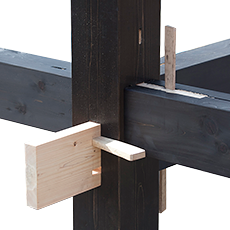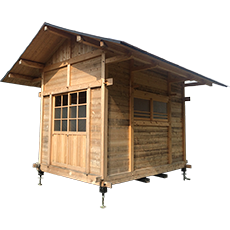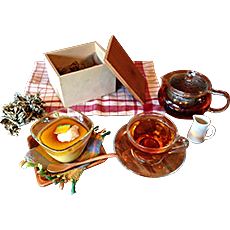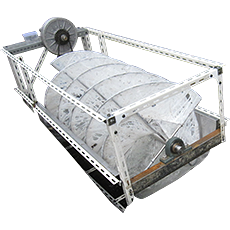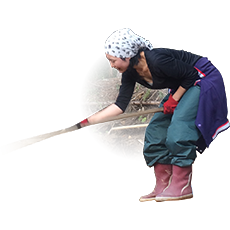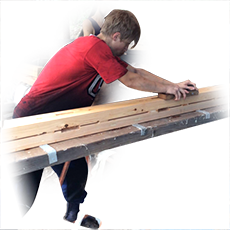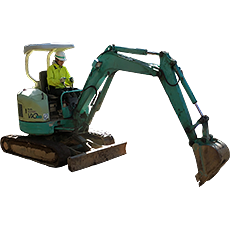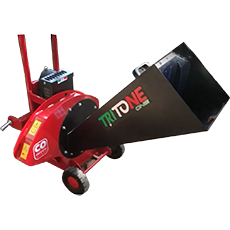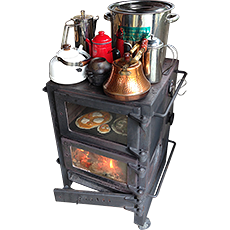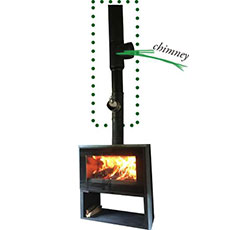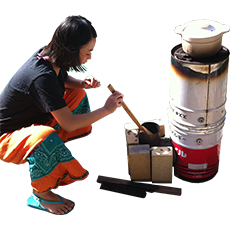-
木の住まい
木の生命力を最大限に引き出し、住まう人に安らぎと強さを与える伝統的木造軸組建築の住まい。 -
健康
清涼な空気と水、緑に囲まれて、自ら心身を調整して健康になるためのプログラムをご案内します。 -
里山生活
美山里山舎のカフェや宿泊のご案内、研修・見学・各種体験受入、美山への移住や生業づくりの相談、その他について。 -
山を活かす
持続可能な作業道づくりから伐採、運搬、製材・加工、燃料化までの流れを極小規模で実現する里山舎メソッド。 -
火のある暮らし
暖房、調理、給湯、入浴、防災…薪の火がくれる安心と豊かさを日常に取り入れてみませんか。
Wellbeing Workshops at Satoyama-sha: Energy Up!
On 27 August, the first in a series of eight workshops on health and wellbeing was held at Miyama Satoyama-sha. The goal of these workshops is to help the participants better understanding their bodies, while introducing ways in which they can use the surrounding nature to reach their goal: a healthier self. Under the guidance of Dr. Ito, other professionals, and skilled locals, the participants will come together once a month to learn first-hand how they can improve their lifestyles.
The morning of the 27th was slightly chilly, and the sky heavy with gray clouds, but despite this Satoyama-sha was bustling with energy. We kicked off the day with a lecture by Dr. Ito, a professor at Meiji University of Integrative Medicine (明治国際医療大学), specializing in the field of Eastern medicine (e.g. acupuncture and moxibustion). Dr. Ito is also well versed in areas such as self-care and ache related problems.
A Society Ruled by Convenience
In today’s society, Dr. Ito explained, people have a tendency to lean very heavily on hospitals and medicine to keep them in shape. While such health services are of critical value, especially when dealing with serious ailments, a flue alone should not prompt a trip to the hospital. This is a waste of both time and resources, as minor disorders can easily be treated at home, or better yet, prevented altogether by a healthy lifestyle.
People nowadays can easy access everything, be it food, entertainment or health services. Thus, it is hardly surprising that our society has adapted a lifestyle ruled by convenience. However, a number of decades back reality was quite different. Without easy options available, people were forced to think ahead in all areas of life, and – as doctors were few and far apart and any disease could turn fatal – people paid more attention to their health.
Dr. Ito’s goal is for modern society to reclaim this way of living to a certain degree, one of the first steps being to get better acquainted with our bodies. Without such knowledge we lack the ability to interpret the warning signals that our bodies are sending us when something is amiss. So we need to start listening to our bodies, already at a healthy state.
When in Doubt, Check In with Your Body
An important part of learning to know our bodies is to do a control of its current state. To aid the participants in this task Dr. Ito, with the help of his students, conducted a basic health check (including blood-pressure, pulse, and temperature) on each participant. Each individual also filled out a self-evaluation form concerning their health and general wellbeing.
Dr. Ito then moved on to introduce us to the subject of self-management. As opposed to self-care, which occurs after having taken ill, self-management works to detect physical and emotional warning signals in time to prevent us from falling ill. Dr. Ito gave us a crash-course on some of the symptoms, keeping it simple enough to incorporate into our everyday routine.
One of these methods was examining your tongue by the help of a mirror. The colour and shape of our tongue indicate what shape our body is in, and we can use this information to plan the coming day, for example adjusting our diet and exercise to fit our condition.
Another technique is looking for tense muscles, which is a sign of physical or psychological stress. Excessive stress does not affect all muscles equally, with the weakest point being the lower back region. For example, by trying to walk on the spot with your eyes closed is a simple method for testing stress levels.
Not only the muscles, but also the multiple tsubo (acupuncture or moxibustion points) in our body react to stress and tension. Hard, swollen, or hot tsubos are all signs that something is not right. Each respective tsubo also corresponds to certain part of the body, and can thus, to a degree, aid in pinpointing where the problem originates.
These are just a few of the ways we can keep tabs on ourselves, and while aching muscles or tsubos can be relieved by a light massage, this alone will not eliminate the risk of illness. Fortunately, Dr. Ito explained how the solution is to be found all around us, if we would only take enough time to actually recognize it.
Mindfulness – a Key Ingredient
To reduce stress, it is important to pay attention and give oneself wholly to the task at hand. This can be referred to as mindfulness. Dr. Ito stresses that mindfulness should be an inherent part of all aspects of life. To show that mindfulness really can be applied to the most unexpected everyday chores, this Saturday we got to experience mindful cooking.
The idea behind mindful cooking is a simple one; the participants first headed outdoors to pick the vegetables of their choice, all the time visualizing and planning their meals. This activity was meant to open up for creativity and inspiration, while the act of harvesting the vegetables in itself worked therapeutically. Back inside the participants improvised an assortment of vegetable dishes.
While shiso juice was prepared, Dr. Ito explained how the properties of the ingredients, whether cool, warm, sour, sweet, salty or bitter, all have varying effects on our bodies. Together these elements help us achieve balance. Depending on the needs of your body, the components of the meal can be tailored to suit one’s current state perfectly. The theme of the day was summer vegetables, as these are said to help cool the body, and are perfect for this time of the year. An additional plus is the aromatherapy from the good smells of cooking, Dr. Ito added with a laugh.
When it was time to sit down and eat, everyone was enjoying and complementing the delicious food: homemade curry and the summer vegetable sides cooked by the participants themselves. Dr. Ito pointed out that eating meals around the same table opens for dialogue, and this is how valuable knowledge used to be passed down between generations. A habit that, Dr. Ito wishes, we would embrace despite our busy lifestyles.
Breath the Nature
To round off the day all participants headed into the forest up to the Mongolian-style yurt, for a session of stress relieving stretching as well as moxibustion. While practicing stretching and moxibustion in itself certainly does well, doing it outdoors further strengthens our sense of presence. The sounds, smells, and the feel of being surrounded by nature all renders it a more mindful experience.
The day ended with another health check and self-evaluation, to see whether the day had had a positive effect on the participants and the previous results had improved. A handout version of Dr. Ito’s lessons during the day, including nutritional information as well as a beginner’s guide to tsubo, was distributed to all the participants. The students of Dr. Ito had set up a temporary treatment-room in one of the mobile houses, where those who wished could undergo acupuncture as a final treatment. After each workshop it is also possible to use the sauna and Goemon bathtub at Satoyama-sha.
Our first workshop with Dr. Ito certainly gave us all enough food for thought to keep us occupied until the next session. We hope to see many eager participants again on 24th of September, when we will be focusing on forest therapy and yoga.
